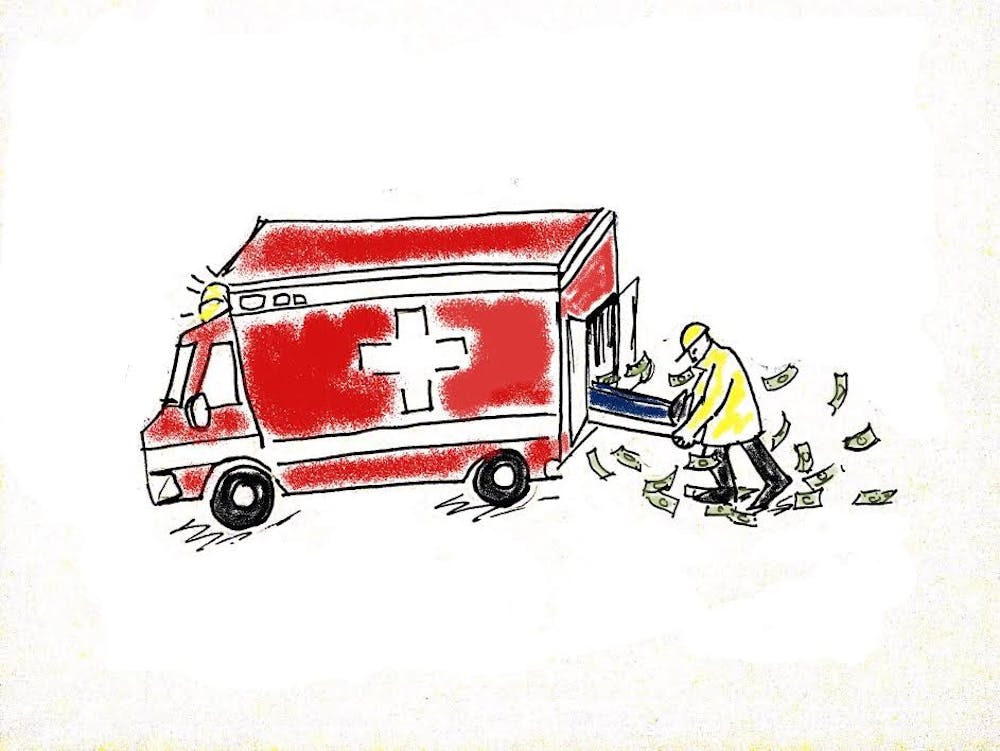We all know someone who’s been there. While MERT is often associated with alcohol poisoning, there are numerous reasons for which they can be called to the scene. The decision to call MERT is often a no–brainer, but sometimes, students can be wary, believing that the hefty price outweighs the direness of the situation.
“No one wants to MERT someone,” says Sierra Mills (E ’20), speaking about a time she called MERT on a stranger who was clearly in poor condition. She “felt so bad about it, since it’s so expensive and a sad thing to do someone.” But, she adds, “It was also very necessary.” Mills’ hesitation to call MERT stems from the knowledge of how she would feel if the roles were reversed, as she factors the looming financial costs in the decision to call. She says, “There’s no way I could drop $2000 to pay for an ambulance, or however much money it costs. I don’t want to MERT someone if it’s not necessary.”
Everyone knows that the bill that comes with MERTing can be eye-watering. What people don’t know, however, is that MERT itself is actually free.
Chief of MERT, David Gordon (C ’19) breaks down the process: “What happens is, someone has some sort of medical emergency and calls the Penn Emergency number, 215-573-3333. MERT is dispatched to the scene, where they perform medical assessment on scene. Then the Philadelphia Fire Department, ‘or PFD,’ is the ambulance ride that will take you to the hospital.” What this means, then, is that MERT is not actually the organization charging you.
“When people say MERT costs money, they’re often thinking of the ambulance ride to the hospital and the cost of the hospital service,” he clarifies, emphasizing the fact that MERT is free and that students shouldn’t shy away from receiving immediate medical attention in moments of need.
After being MERTed, the student will be sent a bill from the PFD, not MERT. According to the PFD, the ambulance fees range from $950.00 for Basic Life Support (BLS) service to $1170 for Advanced Life Support (ALS) service, plus $10 per loaded mile.
Understandably, the price comes as a shock, particularly to the parents who often have to foot the bill. But the bill can be sent to the student’s insurance company who can cover all or part of it, depending on their insurance. Penn also has resources within VPUL for students with unexpected medical needs.
Would it be worth it to avoid the cost by taking another means of transportation to the hospital, such as Uber? Gordon disagrees, as Uber drivers “aren’t likely to be trained EMTs and don’t have the medical equipment that MERT or an ambulance has.” He recommends always calling MERT because their mission is to get you to the medical care that you need as quickly and as safely as possible.
Besides, MERT is trained on analyzing when someone does or does not need to go to the hospital. If the patient does not need the ambulance, then it will not be called and the patient will not be charged. When Lenox Butcher’s (C ’20) was a freshman, her RA called MERT for her and she started “freaking out about the cost,” she says. “My RA was like ‘No, it’s free, you’re not going to go get in the ambulance’.” After MERT advised her to go to the hospital “just to check if everything was fine”, she ended up walking there from the Quad and ultimately wasn’t billed.
So while there are costs involved, don’t forget the following: MERT is free, and your safety is priceless.

